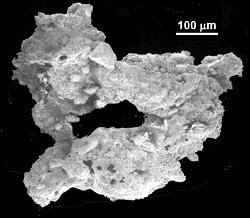NASA is developing a lunar dust-busting paint – Astronomy Magazine
Electric dust bunnies
Lunar dust and the damage it can cause was a major concern for the Apollo astronauts. In fact, it was such a concern that the astronauts were instructed to stop and clean off the Lunar Roving Vehicle (LRV) at regular intervals to prevent dust damage to the electronics. That took valuable time away from already limited lunar excursions. When the LRV lost one of its dust-busting fenders on Apollo 17, the astronauts had to jury-rig a new fender out of laminated maps and duct tape to prevent the vehicle from kicking up excessive amounts of dust for the rest of the mission.
And to make its damaging qualities worse, lunar dust is charged. On the dayside, ultraviolet radiation from direct sunlight gives lunar dust a net positive charge by knocking off electrons. On the nightside, plasma from the Sun instead deposits electrons, leaving the surface with a net negative charge. And anything sent from Earth — be it astronauts, rovers, or construction materials — also carries its own charge. These charges can cause dust to not only quickly build up on astronauts and their equipment, but also potentially generate electronics-harming electrical fields.
A simple paint coating would be an elegant and easy solution to this major hurdle. If the ISS test is successful, the team said, the next step could be building a system to deposit indium tin oxide onto more pigment at once. This will increase the amount of the coating they can produce for future testing on spacesuits, rover surfaces, and more.







